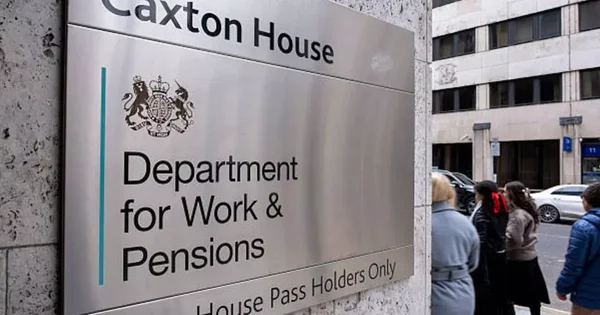The UK government is considering a significant change to the way individuals pay stamp duty when purchasing property, a move that could have a major impact on homebuyers across the country. Under current rules, stamp duty land tax (SDLT) requires buyers to pay a lump sum to HM Revenue and Customs within 14 days of completing a property transaction.
However, the government is now reviewing proposals that could allow buyers to spread these payments over several years. This discussion comes amid ongoing debates about the affordability of homeownership and the role of property taxes in influencing housing market mobility, labour flexibility, and economic growth.
While no final decision has been announced, sources indicate that this reform is gaining traction within both government and industry circles, prompting widespread interest and mixed reactions.
Stamp Duty Reform Proposal
Discussions are underway in the UK regarding the potential overhaul of the stamp duty land tax (SDLT) payment structure for property buyers. The key change under consideration would allow individuals to pay their SDLT bills in instalments rather than as a lump sum immediately after purchasing their property.
This proposal follows increasing calls from think tanks, economists, and property professionals who argue that the current upfront payment system acts as a financial barrier, deterring prospective buyers and causing market stagnation.
The government, in response, is actively examining whether a staggered payment model could ease the burden on households and stimulate market activity.
Current Stamp Duty Rules Explained
At present, stamp duty must be paid by property buyers in England and Northern Ireland, with a requirement to submit a return and settle any tax owed within 14 days of the transaction's completion. This tax is commonly calculated and filed by the buyer’s solicitor or conveyancer, ensuring legal compliance and swift transfer of funds to HM Revenue and Customs (HMRC).
For residential properties, SDLT thresholds and exact rates depend on the property value and whether the buyer already owns other homes. The cost can represent a significant percentage of the transaction, especially in regions with higher property prices, sometimes requiring buyers to access substantial additional funds on top of their deposit and mortgage.
Government’s Consideration of Payment Flexibility
Chancellor Rachel Reeves and Treasury officials are 'regularly discussing' options that would enable buyers to distribute stamp duty payments over multiple years, according to reports from political and financial sources.
These consultations are part of a broader government review into property tax reforms designed to address affordability and mobility issues. One notable suggestion, backed by the Tony Blair Institute for Global Change, involves offering government-backed loans to households, thereby allowing them to repay their SDLT obligations gradually over as much as 20 years.
A key feature of this proposal would exempt moving households from repaying the remainder of their stamp duty loan if they relocate within the loan period, thereby eliminating what is often described as an 'upfront penalty on mobility.' A spokesperson from the Institute emphasised that such reform is ‘long overdue’, adding, ‘This would encourage labour-market flexibility and support growth by making it easier for people to move for work.’
Stakeholder Opinions and Economic Context
The proposal to stagger stamp duty payments has divided opinion among tax specialists, economists, and mortgage professionals. Paul Davidoff, a tax adviser at Kingsley Napley, expressed concerns, stating, 'For those with mortgages who have borrowed as much as they can afford, the addition of a further monthly or annual outgoing might make their mortgage unaffordable.'
His argument highlights a potential unintended consequence: increasing the long-term financial commitments of homeowners already stretched thin by mortgage repayments, council tax, and other living costs. Conversely, the property data company Zoopla, through executive director Richard Donnell, has expressed tentative support: ‘Staggering the payment of stamp duty is a great proposal as it would help unlock more home moves, especially in areas with the highest home values and the biggest costs for home buyers.’
According to industry data, regions such as London and the South East see average SDLT bills in excess of £10,000 for many buyers.
Property Sector Response and Proposals
Estate agencies and property groups have entered the debate with their interpretations and suggestions for viable payment structures. Andrews Property Group has initiated a parliamentary petition advocating for more flexible repayment arrangements, recommending that buyers be permitted to distribute costs over two to five years, depending on circumstances.
Despite some enthusiasm for reform, Andrews acknowledges that abolishing stamp duty altogether would be the most effective way to remove transactional barriers in the housing market. However, they point out that SDLT currently generates over £10 billion annually for the public purse, complicating prospects for its elimination: ‘The real answer, long term, is to remove Stamp Duty altogether, but as a tax that generates billions a year it’s a tough one to reform.’
Professional bodies and lobby groups have similarly called for the Treasury to balance the needs of first-time buyers and lower-income households with the stability of public finances, noting that revenue from SDLT funds key government spending initiatives.
What will be the impact
The UK government's consideration of allowing stamp duty land tax payments to be spread over multiple years marks a potentially transformative shift in the country's approach to property taxation.
With affordability pressures mounting and increasing calls for policies that boost mobility and economic growth, the reform if enacted could ease the financial burden on homebuyers, unlock market activity, and align tax structures with the evolving needs of households. However, the proposal faces complex challenges, from the risk of increasing household indebtedness to concerns about impacts on government finances.
As policymakers consult with stakeholders and evaluate the practical, legal, and fiscal ramifications, the future of UK stamp duty remains a topic of keen national debate. Whether reform takes the shape of instalment plans, government-backed loans, or more fundamental changes, all parties agree that action is needed to support housing market health and public financial sustainability.
Stay up to date with the latest property tax changes and insights Pie helps UK residents track their taxes clearly and easily.









